photographic safari
5 Options for African Safaris in Botswana
18/10/13 19:15 Filed in: Photographic Safari

Botswana is a very popular African safari destination and one of the top-rated safari countries. The safari options range from the flood plains of the Okavango to the salt pans of the Makgadikgadi Pan in a country that mostly consists of desert, the Kalahari Desert.
The Kalahari Desert is one option for a great African photographic safari and at the same time a challenge for the photography enthusiast. One can think easily there is nothing to photograph in a desert, but there is, from the stunning landscape to sunsets and sunrise and animals that are well adapted to the desert life. It is absolutely worth planning a Botswana safari itinerary with a few days in the Kalahari.
The Makgadikgadi Pan is one of the largest salt flats in the world and what remains from Lake Makgadikgadi, a lake larger than Switzerland that dried out thousands of years ago. The salt pan is a fascinating safari destination with sleep outs on the pan enjoying the magical starry sky. It is heaven for all who love to watch and photograph stars.
The Okavango Delta is a must see African safari destination. This inland delta with its rich wildlife is for all safari guests a dream and for wildlife photography enthusiasts a heaven. The lush vegetation, the waterborne safari activities, the abundance of wildlife and the sometimes-adventurous game drives are the recipe for a great safari experience.
An evenly fabulous safari destination in Botswana is Savute. This area is further in the northeast of the country, spoiling the guests with a great abundance of wildlife and amazing sightings. It is worth it to have both, the Okacango Delta and Savute as part of the itinerary.
Going further east one comes to Chobe, famous for its huge elephant population and great boat cruises. Especially bird lovers and bird photographers will love the waterborne activities to get close to their favorite animals. Chobe is very close to the Victoria Falls and makes the right stepping stone between the Okavango Delta and the falls for the safari routing.
Although Botswana is mostly desert, it offers such a variety of safari options and fantastic places to see. It is more than worth going there and coming again and again and again. And for photography lovers Botswana provides one of the best lights a photographer can wish for to great fabulous images.
Happy safari travelling and wildlife snapping!
Ute Sonnenberg for www.rohoyachui.com
What is a top-rated safari country
10/10/13 09:13 Filed in: Photographic Safari

A top-rated safari country has a great variety of safari circuits, offers safaris for all interests and budgets, has beach extensions, provides great wildlife sightings and has something nobody else has.
All that applies for example to Tanzania. It got its popular northern circuit with the Ngorongoro Crater and the Serengeti and off the beaten track safaris in Selous and Ruaha. It has the Great Migration including the calving of the wildebeest and great wildlife viewing in the other parks. It got the best chimp tracking in Africa in Gombe and Mahale Mountains and fabulous beach extensions on Zanzibar. The only negative to say about Tanzania is, that it is not possible to put all that in one safari. One needs to come back and back to see it all, which is not an unpleasant thing to do.
Similar lists can be made for other destinations like Botswana and Kenya. Look out for them and find the African safari tour that includes all highlights you want to see.
Happy wildlife photography travel snapping!
Ute Sonnenberg for www.rohoyachui.com
What animals will I see in Kruger National Park
09/10/13 13:26 Filed in: Photographic Safari

Often guests who have never been to Africa ask the questions what animals they will see when visiting this or that national park. And it is very understandable that it is hard to imagine how it goes with the wildlife in Africa. Some might have the idea that lion and elephant are roaming through Johannesburg and others that Kruger National Park is an attraction park like Disney Land. Both are not the reality.
Kruger Park is 2/3 of the size of Belgium with wildlife roaming free. Visiting Kruger means that one has to find the animals first, but there is a good chance to see the Big Five, which are lion, leopard, elephant, buffalo and rhino. It got a great diversity of wildlife and safari guests will see a lot from the very small like lizards to the really big like elephant. It is just not possible to tell in advance what you are going to see. It is nature, wild bush and there are no guarantees. Well, maybe one, it will be a great safari, as all wildlife is great and photographers will have fantastic opportunities to come home with great photos.
Be conscious that you are going into a wildlife area and enjoy what the safari has to offer you.
Happy wildlife snapping!
Ute Sonnenberg for www.rohoyachui.com
How do I find my perfect african safari
07/10/13 08:07 Filed in: Photographic Safari

The obvious answer to that question seems to be, the Internet. Just go and search for your perfect African safari and pages over pages of safari offers will roll out over your computer screen.
But that does not really help to find the perfect safari for you, neither for others. The most important step is to find out what makes a safari perfect for you. Sit down and brain storm with yourself. What do I want to see, what do I want to experience, what animals do I want to see and how do I want to travel. Read books, watch documentaries, talk to people, talk to your tour operator and get an idea of the available safari standards with regards to accommodation, game drives and transport. And most of all follow your heart. If all the books are saying you need to go to Kruger at that time of the year and not to the Serengeti, but you feel yourself drawn to the Serengeti, then go, even if it is rainy season. There will be a reason that you need to be there at that time and it might only be revealed when you get there. You might see the most amazing predator encounter and be the only vehicle at the sighting, because everybody else when to Kruger.
Happy wildlife photo safari planning!
Ute Sonnenberg for www.rohoyachui.com
How to break the ice with an elephant
04/10/13 08:30 Filed in: Photographic Safari

Why would you like to break the ice with an elephant and not just run? First of all you are most likely on a safari jeep and don’t need to run. Second of all, it might be necessary to get away quickly even with the vehicle. But usually elephants are nice, as long as you don’t make them angry. And third, if you want to photograph elephants you will need a good relationship with them.
Respect the animals. They feel that and appreciate it. Try to make contact with them to understand what they are communicating. Elephants are very clear in their signals and expect you to respond accordingly. Be aware that elephants have the need for harmony and safety. They get very distressed when they feel uncomfortable or threatened. In some areas they are used to a great amount of human stupidity, but don’t push their patience. Respect their space and needs and they will be wonderful for you and your photography.
Elephants are very lovable.
Happy wildlife photography snapping!
Ute Sonnenberg for www.rohoyachui.com
What is a mobile safari?
01/10/13 09:31 Filed in: Photographic Safari

A mobile safari is one of the nicest safaris one can do. You feel like back in time when the pioneers were trekking through the unknown country, but with nowadays comfort.
Your safari guide welcomes you at arrival and off you go with your private 4x4 jeep into the bush of the Okavango Delta or any other amazing African safari destination. The great advantage of the private jeep is, that you can stop where you want and for how long you want and take all the time to photograph the wildlife and landscape. There will be food and drinks on the vehicle and in the afternoon you arrive at your campsite. The campsites are private and a team of helping hands has been already busy pitching the tents, preparing the meal and drinks and you only need to arrive and enjoy. It is time to sit at the campfire with a drink and a snack and look back on the day’s photographic adventures.
And the next day is just the same, just as wonderful as day before and full with new safari inspirations and great wildlife photography.
Unfortunately there is a last day and one has to get on the plane back home, but the memories go with you and you feel a bit like Out of Africa.
Happy safari photo snapping!
Ute Sonnenberg for www.rohoyachui.com
Want a great safari on a budget? Collaborate with friends.
28/09/13 12:27 Filed in: Photographic Safari

When you go on safari in Africa you should have a good safari, actually a great safari with lots of wildlife photography fun, fantastic sightings, good food and comfortable accommodation. That might sound like not being cheap, but it can be possible on a budget when you team up with friends.
It is a big difference in price sharing a 4x4 jeep with 2 or 6 people. The jeep and driver/guide cost always the same, but when 6 people share the costs its only little for each of them.
Try to share a room. Pretty much all lodges and camps charge single supplement, which is almost as much as paying for another person. Do not go for the cheapest accommodation, as their food might not be really good. Go for good mid-range and the price will be fine to.
Don’t forget about the park fees. They can make a big portion of the budget. If you want to see the Great Migration, you must go to the Masai Mara and pay USD 80 per person per day park fee, but if you are happy with any other national park you can safe money with the lower park fees.
Go for it, but do not make the group too big. 6 travelers is just right to keep it nice and fun.
Happy photographic safari going!
Ute Sonnenberg for www.rohoyachui.com
How does wildlife-reptile photography appeal to you?
26/09/13 13:54 Filed in: Photographic Safari
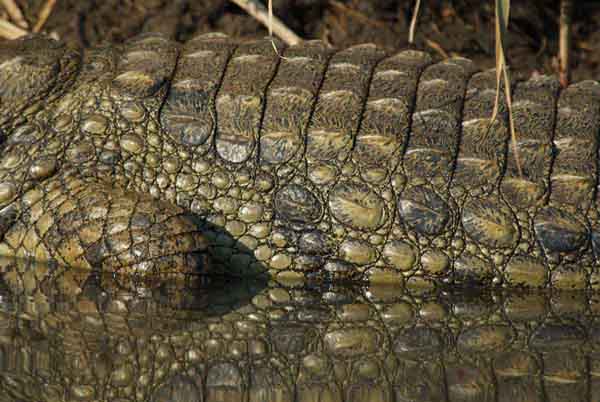
When you go on safari in Africa, you probably do not look forward to meet reptiles like snakes and other crawling friends. But they are beautiful animals and can be very interesting subjects for wildlife photography. It is pretty rare to see a snake at all on your safari. They disappear as soon as they feel a vehicle coming. But when you have the opportunity to see for example a python, this is a great sighting.
But there are more, like e.g. crocodiles and when you visit the Great Migration they will most likely play a major role in the Mara River crossing sightings. They are one of the reasons the crossing is so dangerous for the wildebeest, zebras and gazelles. Seeing a crocodile kill might not make them appeal to you more in the sense of lovable animals, but they are actually very beautiful and demanding subjects of wildlife photography. It is not that easy to take an interesting picture of a crocodile or snake. The right angle and light are crucial.
Maybe start with the lizards in your backyard and see how pretty they are and how challenging at photography subjects. But when you get the hang of it, you will see how beautiful the pictures can be.
Happy wildlife snapping!
Ute Sonnenberg for www.rohoyachui.com
How to develop a good bond with a wild Leopard
24/09/13 15:58 Filed in: Photographic Safari

Developing a bond with your photographic subject is essential for good photography and in wildlife photography that means developing a bond with the wild animals. It does not mean feeding wildlife or calling them or throwing something on them to get their attention. Bonding with wildlife goes through patience, trust and calmness.
Imagine being on a photographic safari in Kruger Park in South Africa. The game drive is in an open 4x4 jeep and lets say you are lucky and the only person on the vehicle. Your tracker and ranger find a leopard, lying in high grass under a tree. First of all this is great and you take a couple of pictures. The leopard is not doing anything, just lying there and the visibility is not too great and you think lets go, it is anyway not so good and he is doing nothing. That would be the wrong thing to do. Get yourself a spot in the shade with your vehicle and wait. Snap around a bit, try different settings and relax. Take in the silence, the smell of the grass and keep an eye on the leopard. The more you relax and tune into the environment the more the leopard will feel comfortable with you around him. You will end up feeling when he stands up before you see it. This is essential, because you won’t hear a leopard standing up, you won’t hear anything when a cat moves, not even a leave cracking. The leopard is now doing his thing and your patience will be rewarded with great wildlife photography and maybe even spectacular wildlife interaction.
Enjoy the bonding and the great images it will give to you.
Happy wildlife snapping!
Ute Sonnenberg for www.rohoyachui.com
The Unspoken Rules of the Bush
18/09/13 09:03 Filed in: Photographic Safari

Maybe they are not that much unspoken, but more unknown to many who go on photographic safari for the first time.
First of all, listen to what your guide is saying. In open safari vehicles do not stand up at sightings. Do not leave the game drive vehicle at sightings (this might sound silly, but people get sometimes carried away and do it, just for the better photo).
Do not run in the bush. You might turn into prey by doing that. Be conscious where you are and expect at all times animals of all kinds crossing your way. Don’t give them a fright. An elephant could react very badly.
Do not sit with your back towards the bush. When we do that, we seem to look very similar to primates and attractive to leopards.
Do not wear flashy colors. Wildlife responds to that and do not forget the very small wildlife, the insects. Their attention is not what you want.
Do not walk at night without a guard. Cats see better than you or you might run into a buffalo.
In essence, listen to what you get told at arrival at the lodge and you will have a great safari.
Happy safari going!
Ute Sonnenberg for www.rohoyachui.com
Why Genuineness is the Future
30/08/13 10:11 Filed in: Photography & Art
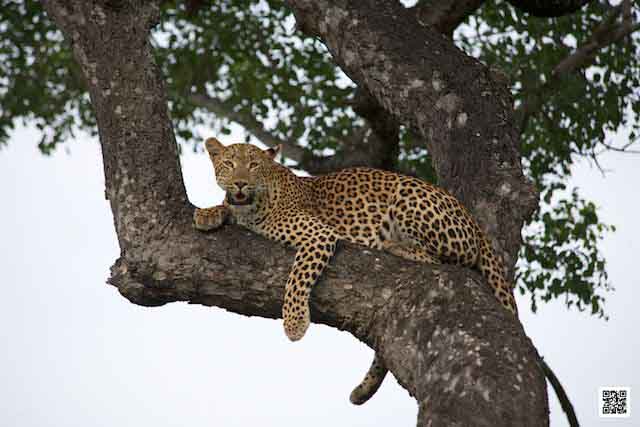
Genuineness in photography is something that was almost lost, with all the Photoshop tools and compositions and subjects copied from images taken by great photographers.
One can already predict how the coming winning World Press Photo will look like and also the next winning image of a National Geographic photo competition. They will be heavily photoshopped and the composition will be what we daily see on TV and in the magazines. It has been like that for years and it might be like that for a few more years, but boredom will fall over the images that win competitions today and people will get tired of always the same.
There are several possibilities where the trends will go, but the most likely direction will be the genuineness of a captured moment. Fashion might not fall into that category, but street photography will most likely and wildlife photography too. People who have been on photographic safaris love their images as they are, because while looking at them, they go back to the precious moment in the Masai Mara, under that tree where the leopard was sitting. They might start thinking when they are back home that they should do something to the photo before showing it online, just because everyone is doing some editing, but by heart they wouldn’t do that. And this feeling, that people just stand to their pictures and love them for what they are will create the change to more natural and genuine photography.
It will be a process and might take a while, but it seems that it has started already. Listen to how you like your photos most.
Happy snapping.
Ute Sonnenberg for www.rohoyachui.com
On Photo Safari: The Safari Language
27/07/13 09:46 Filed in: Photographic Safari

For those who have never been on a photographic safari, wildlife photography course or team building photo safari or any safari at all, the language spoken by rangers and trackers during game drives can be a challenge. It starts with the specific terms for all what the animals are doing or the animal names themselves. For example a group of giraffes is called a journey of giraffes and a group of rhinos a crush of rhinos. Would you have known that?
Or what about the language the rangers are speaking with each other. The animal is not walking or running; the animal is mobile. And they don’t hear an animal; they have an audio of an animal. And of course they have a visual instead of seeing an animal.
But don’t worry, it is very educative and easy learning on a safari and soon you will be able to wield these terms yourself to the astonishment of your friends and families. Fortunately there are field guides to practice the right names and other specific terms and probably you will surprise your ranger with your knowledge.
But there is no language needed to enjoy the beauty of nature and the wonderful wildlife.
Happy safari snapping!
Ute Sonnenberg for www.rohoyachui.com
Practice with M
26/07/13 10:01 Filed in: Photo Tips

Do you shoot always on M, the manual settings on your camera, or mostly with programmed or auto? Even if you are not experienced enough to photograph on manual, you should take some time to practice with this setting, just to get more confident in what you are doing. Nothing can go wrong and you will learn how the camera works with light. You will get a better understanding of the “language” the camera is talking to you through the images.
Sounds to complicated? Don’t think you should start practicing with manual when being on your first photographic safari or team building photographic safari and you are lucky to see a leopard. Then go on your safe mode to get the image. But there are plenty of opportunities to practice, also on safari. For example during the wildlife photography courses we take the time when waiting at a sighting where currently nothing is happening to play with the settings and light or during a picnic. People are often afraid of trying manual and very surprised that it isn’t as difficult as they thought. And at the end they start liking it too, using what manual teaches them to quickly adjust settings in other modes when fast moving objects like a leopard moving in a tree mean fast changing light too.
Try it. It is more fun than you might think and you will learn a great deal.
Happy snapping!
Ute Sonnenberg for www.rohoyachui.com
About Patience
23/07/13 10:51 Filed in: Photo Tips
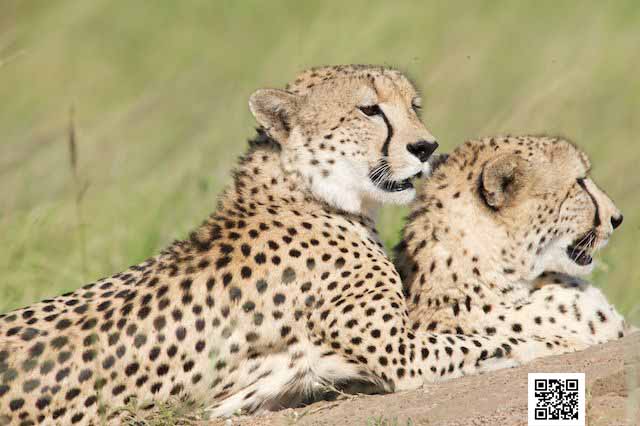
Patience is a reoccurring topic in photography; maybe because it is more difficult than learning all about aperture, shutter speed and ISO. It is probably the “empty” time we experience while waiting for the right thing to happen or just can’t get this memory card quickly enough back in its port, at least we think it has to happen quickly. And that is the next question, what is quick, half a second or 2 seconds or what?
It is a wonderful learning experience when being on photographic safaris, wildlife photography courses and team building photo safaris right in the middle of the bush, with native people living there who look at you in astonishment when you get furious over a resisting memory card. They are used to live in the moment, they walk over the Great Plains a whole day to their “shopping mall” and with the same inner peace they look into the eyes of a lion, when defending their cattle. They might not know the feeling of “empty” time, because there isn’t something like that when living in the moment. There is only one moment at the time.
When being out in the bush one learns that just by being there, but not everybody can pack up and move to the bush. Yoga and meditation are good alternatives to learn about time and patience, beneficial not only in photography, but in all ways of life.
Think about it and maybe even the stubborn memory card will give up and just do what you want it to do.
Happy snapping!
Ute Sonnenberg for www.rohoyachui.com
Try Aerial Photography
22/07/13 10:03 Filed in: Photo Tips

Have you ever thought of trying aerial photography, but dismissed the idea, because you thought that is going to be complicated and too expensive? It can be expensive when booking a plane or helicopter or balloon to exclusively do aerial photography, but there is an alternative. Just find a high tower or building and use the elevated view to take great aerial shots. Ever thought of just going onto the first floor of your house to photograph flowerbeds in your garden?
That works all well when there are houses and towers around, but when being on photographic safaris, wildlife photography courses or team building photo safaris it is not really an option. A high tree will not do enough elevation in the Masai Mara or Kruger Park or Serengeti. But they got plenty of hot-air balloon companies to go on a really nice ride over the Great Plains. There are also private small planes that offer half an hour flights over the Masai Mara, which gives more flexibility than a balloon, although the balloon is quieter and not so bumpy as a plane can be. Almost a must is a balloon flight in the Namib Desert in Namibia. You will never have these fantastic sights from the ground.
However, thinking aerial is the first step to open new views and angles to your photography. We often just don’t think of the bird view perspective, although it’s available just at our doorstep.
Happy snapping!
Ute Sonnenberg for www.rohoyachui.com
Group Size Matters
19/07/13 08:36 Filed in: Photographic Safari Tips

There are plenty of photographic safaris, wildlife photography courses and team building photographic safaris available and it can be difficult to make the right choice. Always go for quality and one of the main criteria is the group size.
Make sure there are not more than 6 people on the game drive vehicle. Otherwise you might end up on a middle seat like on the plane, a seat nobody wants to sit on and definitely not on safari.
If you attend a wildlife photography course and you want to make sure you learn what you need and want to learn, not more than 6 people should be in the group, rather less. If you are part of a bigger group, split the group into smaller groups with each small group having their own instructor.
With team buildings it depends what their purpose is, what the team wants to experience and also here, the experience can be customized for the best results.
Keep it in mind when you plan courses or similar activities. It makes a huge difference.
Happy learning!
Ute Sonnenberg for www.rohoyachui.com
On Photo Safari: When is the Best Time to Go
13/07/13 14:31 Filed in: Photographic Safari

Guests often ask when is the best time to go on photographic safari in South Africa, wildlife photography course in Kenya or team building photographic safari in Botswana. The answer is it depends on what you want to do and see.
If you want to see the Great Migration in the Masai Mara you need to go between the middle of July and the beginning of September. For the rest the Masai Mara offers throughout the year great wildlife sightings, only the vegetation will look different when going just after the rainy periods or just before. It will either be nice green or pretty dry, but both are very interesting for photography.
If you want to go to the Okavango Delta and to do water activities, you need to go during the time that there is enough water to do so. But also here the Okavango Delta is beautiful throughout the year.
If you think about going to South Africa you should know that the sightings in winter are often easier, because the grass is low and the animals gather around waterholes. In summer the bush is nice green and it is warm. It all depends on what is important for you and when you have the time to go.
In other words, always talk to the people you are booking your trip with to find out what the best would be for your interests and you will have a great photographic safari.
However, the bush is always amazing. You can let the bush surprise you with the beauty it offers at the time of your visit and you will go home with incredible photpographs.
Happy travelling and snapping!
Ute Sonnenberg for www.rohoyachui.com
Realize Where You Are
11/07/13 14:30 Filed in: Photographic Safari Tips

Every time you go out to photograph, you need to tune in to the place where you are in order to get the best results with your photography. That applies to the simple walk in the park next to your house, the place of a friend, the holiday in France, the photographic safari in Kenya and South Africa, the wildlife photography courses in Botswana, the teambuilding photographic safaris in Tanzania, the visit to the museum, the birthday party of your niece and so on.
The point is that only when you realize where you are, in other words when you are conscious where you are, you will be able to get the light right for your camera settings, you will see the beauty of the place and you will be able to capture its essence. If for some reason this is not the case, maybe because of a distraction or a jet lack or something other of this kind you will see it in your images. There will be some kind of “noise”, appearing e.g. as the image being too bright or too dark or the composition being hideous. When you notice that, take a step back, slow down and start feeling where you are. Then take your camera and start again. The images will show the difference.
Ready to go? Enjoy your photography!
Happy snapping!
Ute Sonnenberg for www.rohoyachui.com
What are edVenture Retreats?
09/07/13 11:49 Filed in: Photographic safari destinations

For those who want to give their photographic safari in South Africa or the wildlife photography courses in Kenya or even the team building photographic safaris to Namibia an extra dimension can turn it into an edVenture Retreat. The word edVenture stands for “educational adventure” and deepens the experience by choosing very special locations for the events with additional meditations and exercises.
The purpose is to recalibrate and reconnect in order to achieve better results and to benefit even more from the photographic experience in the bush.
EdVenture Retreats are a comfortable experience in enchanting environments and make the attendees connect with their creative strength in a deep and long lasting way.
Ever thought of utilizing meditation or energy work to enhance your photography? You might not be conscious that you do it already. Yoga for example is a strong tool.
Happy learning and snapping!
Ute Sonnenberg for www.rohoyachui.com
On Photo Safari: Say Stop When You See Something
06/07/13 15:56 Filed in: Photographic Safari Tips

When guests are going on photographic safari, team building photographic safari or wildlife photography course for the first time, they often hesitate to come out for themselves with regards to the photos they want to take. It can be intimidating to sit on the game vehicle for the first time with a ranger in command of driving and explaining and often a tracker in charge of finding the animals. And now you, the newbee wants to say stop, where the ranger didn’t show any sign that there would be anything interesting. But you should. Nobody sees what you see and it is not important that nobody else sees it. Its your photo, you saw something worth photographing and you want to capture it. And if the ranger doesn’t stop quickly enough to get the shot you saw, ask to reverse, that you still get your lovely photo.
The photo needs to appeal to you and when it appeals also to others, that is even nicer, but in the first place, it’s your photo.
Trust your eye. Happy snapping!
Ute Sonnenberg for www.rohoyachui.com
On Photo Safari: Water
29/06/13 17:21 Filed in: Photographic Safari Tips

What do you think of when you hear “water” in connection with photographic safaris, wildlife photography courses and team building photographic safaris? Yes, there is the water in the Okavango Delta you can drive through and rivers along your game drive routes, but the most important you should think of in connection with water is, drinking water.
Have always bottled water with you when you are out in the bush to avoid dehydration. It can sneak up on you and when you get the headache and stomach cramp it is already serious. Keep drinking water and you will enjoy fabulous game drives.
Happy snapping!
Ute Sonnenberg for www.rohoyachui.com
On Photo Safari: It can be cold
22/06/13 17:09 Filed in: Photographic Safari Tips
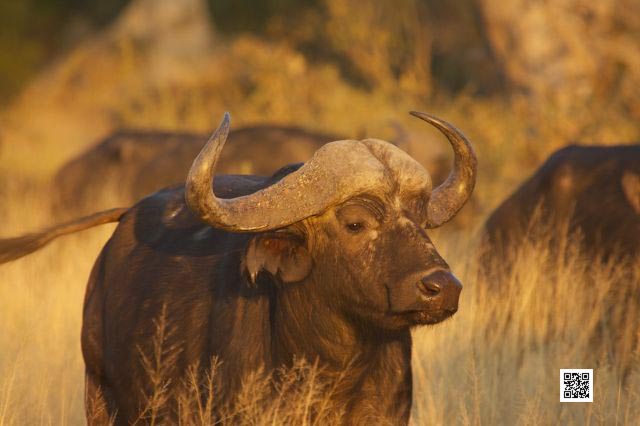
Africa is a continent with lots of sun, but it can be cold too.
People on photographic safaris, wildlife photography courses and team building photographic safaris are often completely surprised how cold it can be, especially in Southern Africa, where in winter the temperature can drop to 0 degrees at night.
It is advised when traveling during June, July and August to Botswana, Namibia and South Africa to bring a warm jacket, gloves, a warm hat and a scarf. You will appreciate it!
Happy travelling!
Ute Sonnenberg for www.rohoyachui.com
On Photo Safari: Game Drives
15/06/13 17:00 Filed in: Photographic Safari
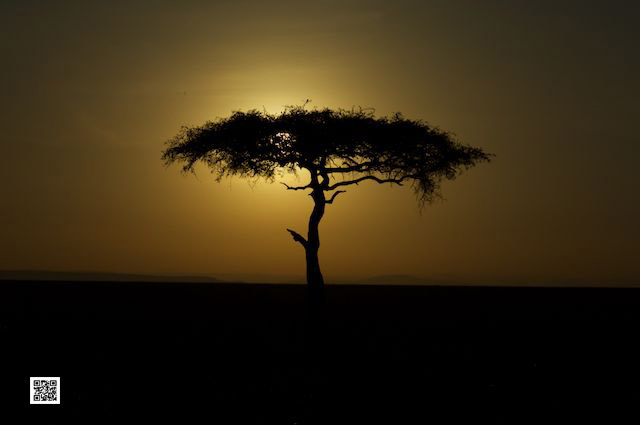
There is the wide spread idea that the people on the game drive vehicles during photographic safaris, wildlife photography courses and team building photographic safaris are doing nothing, just sitting there. And the guests themselves think the same and are completely surprised that they are so exhausted in the evening.
Physically one is not doing walking, running or climbing to really say being physically active. Yet a game drive vehicle drives on dirt roads and off road, shaking the people on it quite a bit. But this is not all. The vehicles are open and the people on them are exposed to the elements. On top of it come the intense impressions one get from watching wildlife and nature and in the evening one has really done a lot by only sitting on a car.
Unbelievable? Try it.
Happy shaking!
Ute Sonnenberg for www.rohoyachui.com
How to Avoid Last Minute Stress
10/06/13 15:24 Filed in: Photographic Safari Tips

How do you experience being just in time before the boarding gate closes or quickly throwing your equipment in the bag before departure? Are these the circumstances you perform best? If you do, you will not feel stressed by it, but if you don’t you will most likely feel very stressed. How to avoid that?
Make a plan. Just like for any other occasion plan your photo shoot, holiday travel, photographic safaris, wildlife photography courses and team building photographic safaris. Make a to do list and set deadlines for each task. Keep some buffer time for unexpected difficulties and when traveling far make sure you have some time to rest before departure. Especially before long haul flights this is recommended.
Probably the core problem of getting stressed at the end is, that we think we still have time and then other things happen and we can’t do what we need to do. When you can do it today, do it. When you can prepare your photographic gear today instead of an hour before departure, do it today. That keeps you always ready for unforeseen events and you will not run out of time.
Ready? Happy planning and snapping!
Ute Sonnenberg for www.rohoyachui.com
Wildlife Photography Destination Sabi Sand
30/05/13 08:49 Filed in: Photographic Safari
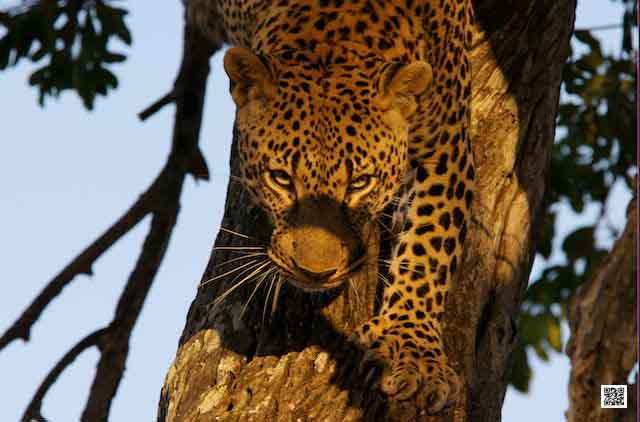
The Sabi Sand is a wildlife area bordering Kruger National Park in South Africa. It is named after it’s two rivers the Sabi and the Sand River. This area is the gem of the safari areas in South Africa, actually it is the best area to visit when going on photographic safari, team building photographic safari and wildlife photography course in South Africa. And for those who would love to see leopard it is anyway a must. It is almost guaranteed to see leopard there.
The main reason this area is so great for wildlife sightings is the fact that it consists entirely of private game reserves. No public road, no self-drive safaris and strict rules make the difference. For example at a cat sighting only three vehicles are allowed and if there are cubs involved even only two or one, depending on the age of the cubs.
Accommodation wise there is a variety of lodges available, from budget to luxury. But there is a but. When planning a safari to this area ask how many guests will be on the game vehicle. It differs per lodge and you should choose a lodge with a maximum of 6 guests on the vehicle. Anything more is very irritating and frustrating, especially when doing photography.
If you plan to go on safari in South Africa, you should definitely go there, it’s the best you can get.
Happy snapping!
Ute Sonnenberg for www.rohoyachui.com
With Point-and-Shoot Camera on Safari?
28/05/13 09:29 Filed in: Photo Tips

With all the talk about big cameras and big lenses for wildlife photography, photographic safaris, wildlife photography courses and team building photographic safaris one can easily feel intimidated and hesitating to go on safari. But don’t, you can go with your point-and-shoot camera on safari; you will just have to keep in mind that there are some limits to what you can expect from your images.
You don’t need to worry about the zoom. Most of the small cameras have a great zoom, some get even closer than the big lenses. It’s the image quality that makes the difference. But if you just want to capture your memories and don’t have high aspirations in wildlife photography you will be fine.
The biggest problem with the small cameras is the speed. They are not fast enough to capture fast changing moments and that can be frustrating. You can reduce the frustration by learning about animal behavior and anticipating on animal movement, that you get the shots you want. It will not be perfect, but you will do well.
But the most important is, that you enjoy your safari and often only watching is just great.
Have fun and just go!
Ute Sonnenberg for www.rohoyachui.com
ePhoto Book: Dream Okavango
26/05/13 08:49 Filed in: Photographic safari destinations

One of the dream destinations of photographic safaris, wildlife photography courses and team building photographic safaris is the Okavango Delta in Botswana.
Join a female leopard in her dream of her home, the amazingly beautiful Okavango Delta, where a river disappears in the desert and creates a magical place.
View the ephoto book here.
Happy dreaming!
Ute Sonnenberg for www.rohoyachui.com
How to Choose Your Photographic Safari
22/05/13 09:17 Filed in: Photographic Safari Tips

The first step to choose a photographic safari, wildlife photography course or team building photographic safari is probably to go to the Internet and search on Google for the destinations we have in mind. A whole flood of possibilities evolves and now we have to choose from this overwhelming amount of offers.
Automatically we have a look at the top search results and often we just go with them. But there is a lot to be considered when choosing a photographic safari. One main factor is the budget available for the trip, but be also conscious of the quality and what determines the quality of a safari.
If you want the real safari feeling you should not book a lodge that feels like a hotel. Choose a tented camp and there are great simple camps that offer just all you need for a reasonable price. Make sure you will have the game drives in 4x4 safari vehicles and a professional trained guide as the driver. Choose A-locations to avoid disappointment with the sightings. If you are determent to see leopards, go to places where you have the highest chance to see them, not to places where they are rarely seen.
And last but not least trust your feeling. Your intuition will not let you down and help you finding the right safari from all the offers available and probably all the information you get from all sorts of resources. Somehow you will just know what to do and it will be the right choice for your safari.
Happy traveling!
Ute Sonnenberg for www.rohoyachui.com
Can You Leave Office Behind?
21/05/13 08:44 Filed in: Team Building

It is a common sight in our cities to see people walking with their heads down, scrolling through emails, social media or having a phone call and doing all together. But how is it on holiday and especially on photographic safaris or during wildlife photography courses? Well, it depends.
A few years ago, going on a photographic safari was a great excuse for not answering phone calls and not accessing emails, because there was no Internet in the bush. But the pressure of the offices made its way also into the bush. Guests could only travel to places where they have email access and cell phone signal, so the lodges nowadays are equipped with satellite Internet connections and cell phone signal. But at least on the game drives there is mostly still an oasis of Internet free space, what keeps the office out.
But in essence its us, having the feeling that we cannot be without the emails and phone calls, like something terrible would happen, if we would not respond immediately. Especially during team building photographic safaris it is hard for the delegates to switch off. They are there with their colleagues and of course conversations are going about work, but at least the photography and the wildlife distract for several hours a day and create a real break from the office, also if there is Internet. Nature and photography are stronger than emails and probably more inspiring.
Enjoy your photography office breaks.
Happy snapping!
Ute Sonnenberg for www.rohoyachui.com
On Photo Safari: Whwn You See Busses
18/05/13 08:47 Filed in: Photographic Safari

When you plan to go on a photographic safari, wildlife photography course or team building photographic safari you will most likely picture yourself on a 4x4 safari vehicle, looking out over the bush, animals passing by and silence. No sigh of civilization is in your picture, no noise on disturbance.
When you eventually get to your photographic safari destination and you are driving on a tar road and a touring bus is coming towards you, you know that there is something wrong. Your are not at the right place, this is not the safari feeling you came for.
I other words, be careful where you are going, inquire carefully about the national parks you are visiting and what you can expect to see. Only the private game reserves can provide the undisturbed safari experience, but also parks like the Masai Mara are great. Often national parks close to big cities are used for excursions for schools or big groups of tourists. Keep that in mind when you plan your trip.
Enjoy the wildlife and have fun with your photography.
Ute Sonnenberg for www.rohoyachui.com
Planning a Photo Safari: Research Your Destination
07/05/13 08:48 Filed in: Photographic Safari Tips
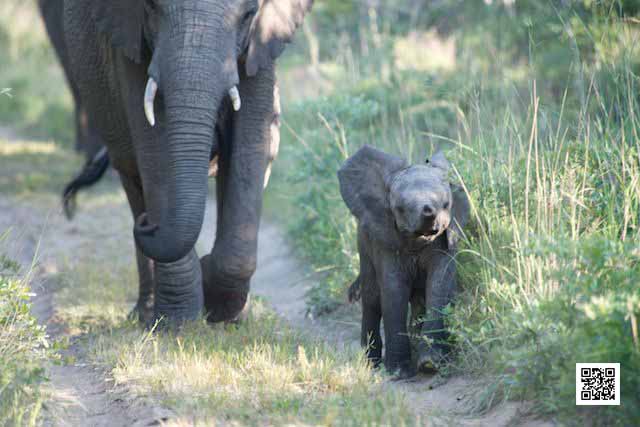
It is great to go somewhere and just shoot away spontaneously, yet there are situations you better do some preparations. That applies to travel photography and also to wildlife photography during photographic safaris. You usually have a certain amount of time to spend at several destinations and you want to photograph the best and be ready to capture great opportunities like a wildebeest crossing during the Great Migration in the Masai Mara.
Lets focus on the example photographic safaris. First of all research what is the best destination for what you want to photograph and what is the best time of the year for it. Then find out what is the best place to stay to have the game drives you are looking for with the best guides to find your animals. When this is set, prepare your gear. Research how close the animals most likely will be to make the right choice of lenses and how will the weather be at that time in this area to know what clothes to bring.
Having done all that, you should be fine, but keep in mind its nature and animals can change their mind. The same research applies to team building photographic safaris and wildlife photography course, but for the courses your photography guide will do the research for you.
And just do the same when planning a trip to New York or Paris, well without the animals, but research also these destinations that you don’t miss interesting photography opportunities.
Happy traveling!
Ute Sonnenberg for www.rohoyachui.com
On Photo Safari: The Third Lion
04/05/13 16:27 Filed in: Photo Safari | Safari Story

Its such a thing with lion, when you see one, always wonder where are the others. That couldn’t have been more true than during a wildlife photography course we did a while ago in the Masai Mara in Kenya.
The wildlife photography course was part of a team building photographic safari and we had two open 4x4 jeeps to have enough space for photography. It was an afternoon game drive when we saw two mail lion lying in the grass on the open plains. It was an area where off road driving was allowed and we drove closer to the lion. All was fine. The male lion were beautiful, majestic lying in the grass with a bit of a distance between them and we drove from one to the other to see and photograph. While we were driving to the second lion we suddenly got stuck in the wet soft soil and all attempts to get out did not work. Fortunately we had two vehicles, so the other one came to pull us out, with the two male lion watching us. The drivers got out of the vehicle to connect the rope, carefully keeping an eye on the lion. The closest lion was about 60 meters away, but watching only relaxed what these creatures (us) were doing there. We all watched the two lion to make sure the guys on the ground were safe. Suddenly a third lion popped up, very close only about 20 meters away and he was annoyed. Most likely he had been sleeping and was now disturbed. He felt uncomfortable with us so close and we felt uncomfortable too, but our drivers managed to get the rope connected without problems and a moment later we were out and driving again.
The essence of this story is keep watching out when you are on photographic safari in a Big 5 area and be careful when you see a lion, there are most likely more and you don’t want to end up standing in the middle of a lion pride. Being in a vehicle is safe, but standing or walking on the ground is completely different. Then you are in their world.
Just keep that in mind when enjoying great lion sightings, don’t forget where you are.
Happy lion watching!
Ute Sonnenberg for www.rohoyachui.com
Photo Safari Destination Masai Mara
03/05/13 10:48 Filed in: Photographic safari destinations
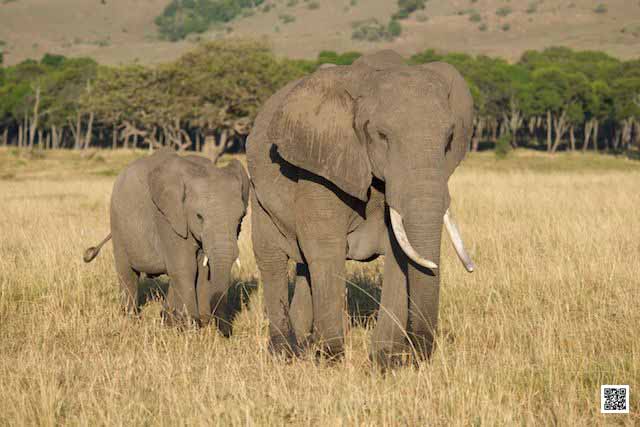
The Masai Mara in Kenya is probably the most famous photographic safari, wildlife photography course and team building photographic safari destination in Africa. The Great Migration of the big herds of zebra, wildebeest and gazelle takes place from the end of July until the beginning of September (depending on the rain) and attracts visitors from around the world. There is hardly something more spectacular than the Mara River crossing of the big herds with many crocodiles waiting for them and a strong current that makes the crossing even more dangerous. Watching this is a breathtaking experience and a heaven for wildlife photographers.
But the Masai Mara is also without Great Migration a fantastic photographic safari destination. Throughout the year the wildlife sightings are amazing and there is always an abundance of wildlife. Besides that, the landscape is also stunning, the marsh with its characteristic beauty, the mountain range offering great views and the open plains, allowing wide views like looking over an ocean, dotted with animals .
The Masai Mara offers always beauty and great wildlife sightings, spectacular light and colors. It is a magnificent place to visit.
Here a practical tip. Outside the Great Migration period the accommodation rates drop and specials are available. That doesn’t mean it is not good to go there. The Masai Mara is always great, at any time of the year.
Got the taste? Try to go.
Ute Sonnenberg for www.rohoyachui.com
Photographic Safari Destination Okavango Delta
26/04/13 18:32 Filed in: Photographic safari destinations
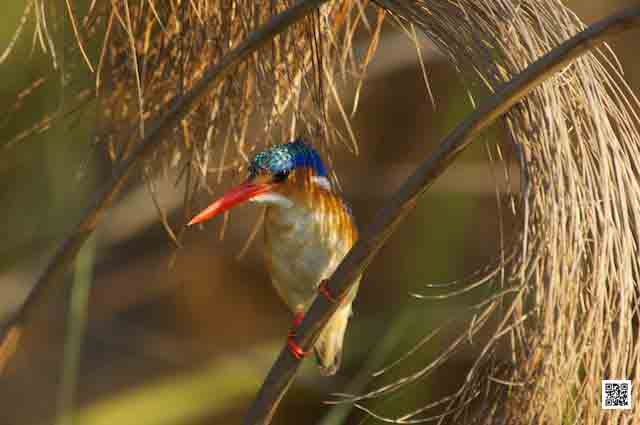
“The Okavango Delta (or Okavango Swamp), in Botswana, is a large inland delta, formed where the Okavango River reaches a tectonic trough in the central part of the endorheic basin of the Kalahari. All the water reaching the Delta is ultimately evaporated and transpired, and does not flow into any sea or ocean. Each year approximately 11 cubic kilometres of water spread over the 6,000-15,000 km² area.” (Wikipedia)
These are the dry facts of an amazing photographic safari destination with the most beautiful light one can wish for a wildlife photography course or just to watch and snap. The Okavango Delta’s best places cannot be reached by car, because they are surrounded by water for most of the time. The combination of water with bush gives the Okavango Delta a very own magic. One has game drives by 4x4 jeep and game drives by canoe or boat. Both open a very own beautiful world of nature with plenty of wildlife and especially birds.
There are also self-drive safaris possible, but they are limited to the accessible areas and these do vary during the year, depending on the water level. The best thing to do are fly in safaris. They provide access to all areas and one can move quickly between the camps. For team building photo safaris it is nice to include water activities that request team effort. Water game drives can be done with electrical powered eco-boats or mokoros, the local canoes.
The best time to visit is from June to November with regards to accessibility, but anytime of the year is great in the delta with beautiful light and great wildlife sightings.
Check it out!
Ute Sonnenberg for www.rohoyachui.com
How Wildlife Photographers can Learn from William Eggleston
22/04/13 10:43 Filed in: Photography & Art | Photographic Safari Tips
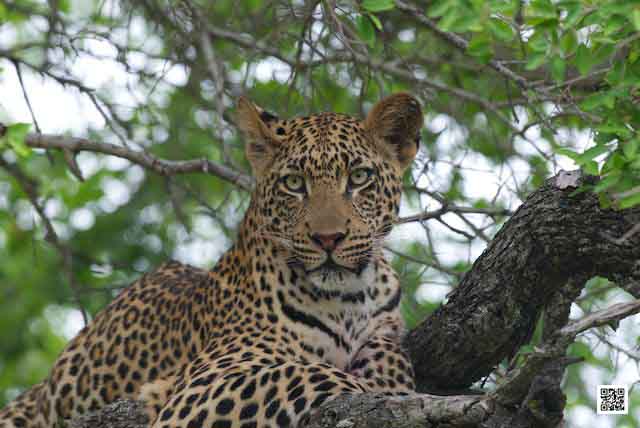
“I was in Oxford, Mississippi for a few days and I was driving out to Holly Springs on a back road, stopping here and there. It was the time of year when the landscape wasn't yet green. I left the car and walked into the dead leaves off the road. It was one of those occasions when there was no picture there. It seemed like nothing, but of course there was something for someone out there. I started forcing myself to take pictures of the earth, where it had been eroded thirty or forty feet from the road. There were a few weeds. I began to realize that soon I was taking some pretty good pictures, so I went further into the woods and up a little hill, and got well into an entire roll of film.” (from a conversation of William Eggleston with Mark Holborn, afterward from The Democratic Forest)
This might sound familiar for wildlife photographers, being on a photographic safari or wildlife photography course lets say in the Masai Mara in Kenya, driving the entire morning over the Great Plains and seeing “nothing”. As Eggleston’s story tells, there is always something to photograph, one only needs to start seeing. And well, we are probably sometimes a bit spoilt, expecting the perfect light on incredible wildlife interaction right in front of us and yes, that happens, but there is so much more to see and photograph by just starting seeing. There is landscape, there are beetles, leaves, flowers, grass, soil, rocks, roads and so much more and not only in the bush, start looking out for it in your own garden and hometown. Do not wait for the obvious great shot, start seeing the great photograph in everything and a whole new world will open to a new dimension in photography. Sounds a bit vague? Try it and see the results. During our team building photo safaris we often experience the most amazing surprises when people who never thought of themselves of being able to express something in photos come up with the most beautiful results and they also might have thought at one stage, that this all sounds a bit vague.
Go and try and be surprised by your photography.
Ute Sonnenberg for www.rohoyachui.com
On Photographic Safari: Traversing Rights
20/04/13 12:14 Filed in: Photographic Safari Tips

When you plan your photographic safari or team building photo safari to Kenya, Tanzania South Africa or Botswana be wise when you choose lodges and game reserves and not that much in regards how luxury they are, but in regards to the game drives.
When we went recently with a wildlife photography course to the Masai Mara in Kenya, we learned that we couldn’t go to all parts of the Masai Mara during the game drives without paying again the park fee of USD 80 per person per day. We had paid already the park fee, but we found out that this gave us access only to a part of the park, witch can be very annoying when you want to see certain areas, but you would have to pay again. The people from the camp told us that there were intentions of the national reserve authorities to change that, but it would still apply to us. So check that before you go and make sure you go to the interesting areas.
Even more annoying is it when you see a leopard going hunting and you cannot follow with the vehicle, because the leopard is crossing over to a different game reserve. This can be the situation in the Sabi Sand in Kruger National Park in South Africa. The Sabi Sand are part of the Greater Kruger National Park, but are all privately hold game reserves, also called private game reserves. This is actually very good, because you will have better sightings and only three vehicles at a cat sighting, what you don’t have in the national park, but there is also a downside. The private game reserves differ greatly in size and the small game reserves do not have enough land to guarantee good game drives lets say for a three nights photographic safari. For that reason the landowners negotiate traversing rights on each others land. But these traversing rights come with rules like you are only allowed to be on the land until 9 am and then again in the afternoon. But when the leopard hunts and it is 9:15 you will not be allowed to follow. Even worse is when the neighbor does not allow traversing and you have to stop at the border, hearing the leopard kill, but not seeing anything. These situations can occur in the northern and western Sabi Sand and they are really very annoying. For that reason look at the size of the private game reserve when you book your photographic safari to make sure you do not have to encounter these “border conflicts”. Choose a game reserve with plenty of land and a maximum of 6 people on the game vehicle and you will have an amazing experience. Maps of game areas are available online and you can ask your agent to advice.
Ready to go? Have fun!
Ute Sonnenberg for www.rohoyachui.com
On Photo Safari: Safety Travel Tips for Photographers
30/03/13 10:33 Filed in: Photo Safari
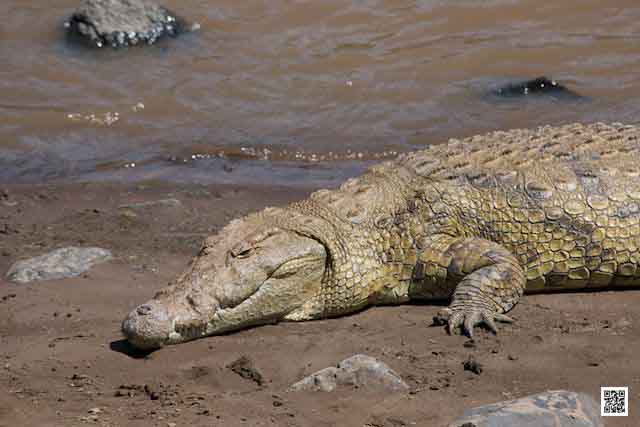
Traveling for photography is the most wonderful thing to do; yet one needs to be conscious of the dangers involved to ensure a great experience and fantastic photos.
This applies to all photography travel no matter where in the world. As a photographer one carries expensive photo equipment and this can attract the interest of the more shady kind of people. So, make sure your equipment is insured in the first place. That gives already a peace of mind. But you want to photograph and not to loose it, so take precautions to be safe during your trip. When traveling in a group do not drop your guard, because you think you are fine as a group. If everyone in the group thinks that drops the guard, everyone will be a soft target for thieves. Yet its understandable that you want to focus on photography not thinking of anything else, so, make clear who in the group is taking care of safety and if you travel alone, find somebody to cover your back.
Another important safety aspect is to make backups of your photos on several external hard drives and just as at home, make sure one backup is off site, which means while traveling keeping them in different places and send one backup home, if possible. Read for more details also Joey L.’s travel tips.
Choose safe accommodation as a “home base” from where you go on your photographic explorations. For example when you want to photograph Andalusia choose a hotel that is safe and in a central location to be able to see all you want during day trips. This has several advantages. You can tell the hotel where you are going and when you think to be back. They will be able to follow up on you, if you are not returning as intended. The hotel will also be able to advice with directions and sights you should see and you avoid carrying around all your things or to pack and unpack every day. I do that anywhere that way, in Spain just as in Nairobi. The locals always know where to go, how to get there and what to do in emergencies. Just choose carefully the accommodation.
The advantage of going on pre-organized photographic safaris is that you are traveling with experienced guides and adequate safari vehicles. Yet be careful with the choice of the safari operator with regards to the vehicle and the quality of the guide. For our photography courses in the bush we always choose operators with qualified guides and 4x4 vehicles and this works very well. They are usually from good camps or lodges that provide also safes in their tents or rooms. They are not the cheapest, but provide higher safety. If you rather travel budget and solo, just be cautious and take in Joey’s tips.
Travel safe and happy snapping!
Ute Sonnenberg for www.rohoyachui.com
The Discovery of Thunder
29/03/13 10:09 Filed in: Photo Safari

This year celebrates the 200th anniversary of Dr. David Livingston’s birthday. He was one of the most remarkable explorers, crossing Africa on foot in 1856 from the Atlantic to the Indian Ocean. He was the one who spotted the Victoria Falls first and there will be celebrations in the Zambian city Livingston throughout the year.
One hears the Victoria Falls first, before one can see them. Their thunder prepares the visitor for what the eye will see, a 2 km wide and 100m tall curtain of falling water, the largest in the world.
The Victoria Falls can be explored in several ways, often embedded in Africa holidays between photographic safaris, from walking the falls to viewing them from a helicopter or small aircraft. They are impressive and a photographic challenge for photographers. An entire photography course could be dedicated to them, learning how to capture their majestic water curtain the right way to let the viewer give the feeling of being there.
The region around the Victoria Falls offers lots of activities from water activities on the Zambezi to bungee jumping and wildlife interactions in the surrounding game reserves.
Maybe this anniversary year is a good reason to visit them.
Ute Sonnenberg for www.rohoyachui.com
On Photo Safari: The Speed of Memory Cards
09/03/13 10:54 Filed in: Photo Safari

When new cameras are announced, the speed in frames per second is one of the very interesting features. We want a camera to be fast to capture animals in motion. Nothing is more frustrating on a photographic safari than pressing the shutter and nothing happens. Sometimes the missing focus is the reason, but often it is the speed. And very often it is not even the camera that slows down the process; it’s the memory card. You can have a fast camera, but it will not be able to use its entire abilities when the memory card is to slow in processing the images. Then you see the message “buffering” and the lion kill is just happening in front of you.
Be conscious about that when purchasing memory cards. Always ask what card suits best the abilities of the camera. When you are attending photography courses make it a topic to understand better what memory card to use when and for which camera. It will make you a happier photographer, shooting away at great sightings in the bush and elsewhere.
Happy snapping!
Ute Sonnenberg for www.rohoyachui.com
Ansel Adams: On Photo Safari in America
06/03/13 14:43 Filed in: Photography & Art

Who wants to walk in Yosemite? Who wants to go on a photographic safari through America? Who wants to attend a photography course presented by a great master of photography?
If your answer is yes, me, then you should visit the Ansel Adams exhibition in London. The show is on until April 28th in the Maritime Museum in London. And if the journey to London would be a bit too far, there is a catalog available online to enjoy his great work.
Learning form old masters is not only beneficial for painters; it is also a wonderful source of inspiration for photographers.
Be inspired and enjoy learning!
Ute Sonnenberg for www.rohoyachui.com
Conservation, Photography and Fashion
05/03/13 09:10 Filed in: Photography & Art
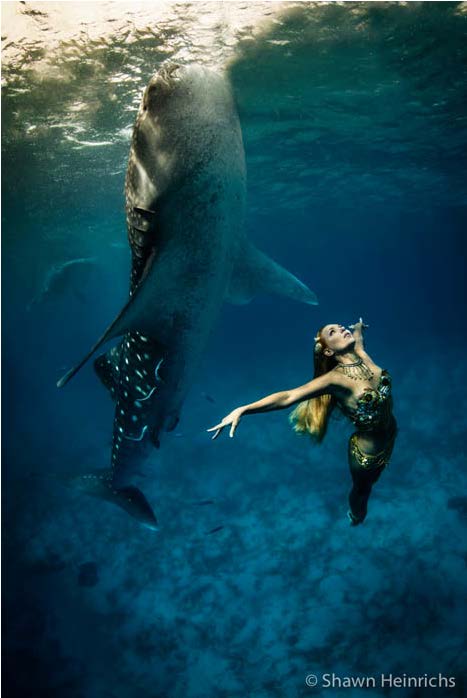
Photographic safaris are helping not only to create jobs and to bring income to communities in Africa; they also play an important role for conservation. Where people go on safari to photograph wildlife, the animals are safe and all is done to protect the wildlife and their environment. The increasing number of guests who do photographic safaris and follow wildlife photography courses helps to ban hunt in precious areas and to increase for example the number of lion in the wild. Ecotourism and photography work well together. They are the future for the wildlife areas, they help to protect and create a nature minding conscious in the communities and in the first world countries. The photo camera replaces the rifle and wildlife is preserved.
Fashion is not that often mentioned as a major contributor to conservation, but there are great examples like the fashion shoot of Shawn Heinrichs and Kristian Schmidt with the intention to help protecting the whale sharks. Whale sharks are endangered, but most people don’t know. These incredible and peaceful animals were posing together with models for a mesmerizing fashion shoot of the most beautiful kind. The community in the Philippines where the photographs were taken has developed a small whale shark tourism. Hopefully they will both have a bright future, the whale sharks protected and safe and the community with a stable income and safe as well.
Read more about the fashion shoot in the original post from PetaPixel.
Ute Sonnenberg for www.rohoyachui.com
ePhoto Book: Lamu
03/03/13 11:21 Filed in: Photography & Art

The island of Lamu is located just off the north-eastern coast of Kenya. It is the oldest Swahili settlement of the country and with its Arab architecture it is a wonder-world for photographers.
This photo book lets you travel to Lamu and takes you on a photographic “safari” through the streets of this World Heritage Site, a very special place for photography courses, lovers of colorful cultures and travelers to the tropical regions of the world.
Enjoy Lamu. View the book here.
Ute Sonnenberg for www.rohoyachui.com
On Photo Safari: Moving Objects
02/03/13 11:20 Filed in: Photo Safari

On photo safari probably the most exciting part is to photograph moving objects, like a leopard jumping in a tree or lion cubs playing in the sun. As long as the lion cubs are playing in the sun everything is nice and easy. The light is great and the images will look lovely.
But as soon as the leopard moves around in the tree and with every step he makes the light changes, it becomes a photographer’s challenge. A leopard moves fast and light changes fast too. That means fast changing settings back and forward, keeping the focus point constantly on the leopard where you want it to be, checking ISO and exposure, not forgetting what you all changed now that he walks into bright light and so on. It is exhausting and wildlife photography course attendees all agree that this is a very challenging task.
But photographing moving objects is also great fun and it often results in stunning arty images, like half blurred horses in the last light of the day or a herd of buffalo like an abstract painting in the first light of the day. Movement is great and often lives its own life in our photographs, surprising us with its mind blowing results and let forget the trouble we went through to get them.
Inspired? Enjoy the fun!
Ute Sonnenberg for www.rohoyachui.com
On Photo Safari: Sunset and Sunrise
23/02/13 11:53 Filed in: Photo Safari | Photography & Art

The moment the sun appears on the horizon and the moment the sun disappears on the horizon are magical moments of a photographic safari. Sunrise and sunset are the moments we love to capture, but sometimes they are also the moments that frustrate us the most when the image is not what we wanted it to be.
Photography courses teach us about contrasts and that we need them for great images and that applies to sunrises and sunsets as well. The best sunsets and sunrises are the ones with clouds. The sun (the light) needs something to shine on to be seen and clouds are ideal. They become the carrier of the sunlight and the light can display its amazing colors that make the event so mesmerizing.
Another great “tool” to create a beautiful sunset photo are trees. That makes photographic safaris in the Masai Mara so fascinating with their single umbrella trees dotted over the Great Plains. The sun setting behind such a tree is just amazing.
But what works in the bush works also at home. No matter if you are in a big city or in the countryside, choose a spot where the sun can shine on something, a cloud, a tree, a building, a person or on water. As long as there is a medium to carry the light, you can create great pictures.
Seeing it already in front of you? Try it and enjoy the magical moment.
Ute Sonnenberg for www.rohoyachui.com
Photo Safari: Hunting Banned in Botswana
19/02/13 12:50 Filed in: Photo Safari
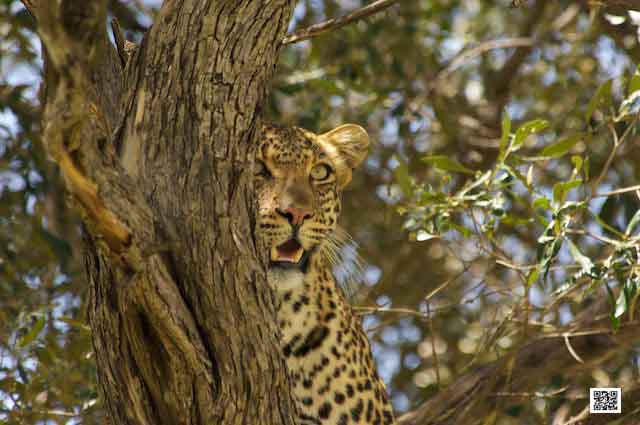
In November 2012 Botswana’s President Ian Khama, gave a speech wherein he announced that by the end of 2013 trophy hunting would no longer be allow allowed in Botswana. He said that "Next year will be the last time anyone is allowed to hunt in Botswana and we have realized that if we do not take care of our animals, we will have a huge problem in terms of tourism."
Great. Photography won from trophy hunting. Photo safari won from hunting safari and it was about time. The number of lion had dropped dramatically and other animals like leopard and elephant were also only to often licensed to be killed. But the peaceful adventure of photographic safaris and the worldwide photography enthusiasm of billions of photographers had turned the table on the hunt. Photography has become a peaceful force of conservation. Cameras replace the rifle and the animals stay alive. The photographer goes home with great image-trophies and
And other countries seem to follow Botswana’s example. Zambia has banned trophy hunt, but so far temporarily and Zimbabwe is considering doing the same until final decisions are made. The fine print of the Botswana ban on hunt is not known yet, but it is a major step in the right direction.
Thanks to eco tourism and photography lovers wildlife is preserved. Photography has become a movement.
Keep moving!
Ute Sonnenberg for www.rohoyachui.com
On Photo Safari: The Photographer
16/02/13 09:30 Filed in: Photo Safari
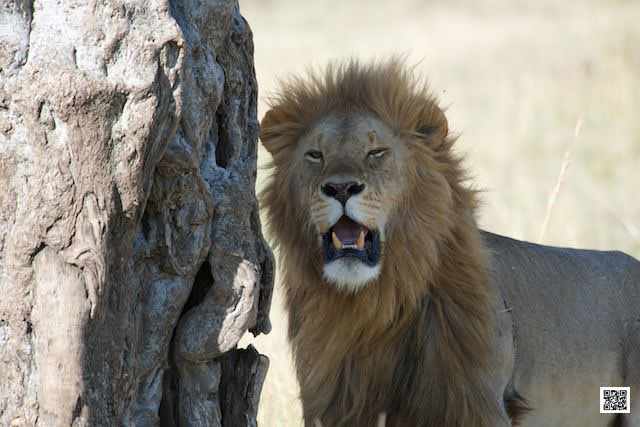
There is lots of attention for camera gear when being on a photographic safari, what lens to bring what settings to use, but there is an essential factor that is often forgotten, the photographer and I don’t mean the ability of the photographer to operate the camera, its something more subtle.
Photo safaris take the guests out on open 4x4 jeeps (strongly recommended to go to places where they are doing it like that and with only 6 people on the vehicle). That means there are two people in a row and if you are lucky you got a row for yourself. Experience from wildlife photography courses taught that it proofed to be hard to get the photographer moving in his/her row, really moving not only leaning over. Wildlife can be on either side of the vehicle or move to the other side of the vehicle and in order to get the best shots the photographer should move too, but often is glued to the spot.
How is this possible? Think of yourself how often you were standing on a spot photographing a scene and getting annoyed that people were walking somewhere on the side or other obstacles suddenly turned up. Did you think of moving yourself to a different spot to get the good shot? One reason to not move is the composition we see just there, but there is more, especially in the bush or other challenging environments. We are feeling comfortable and we like to keep it like that, moving seems then uncomfortable and we resist, stick to where we are and don’t move.
But this is just the point, one got to be willing to move/change in order to get great results and discover different perspectives. Photography is also a physical activity and means physical efforts for the photographer, although its tempting to forget about that, but its crucial.
Keep moving! Keep having fun!
Ute Sonnenberg for www.rohoyachui.com
Carl Zeiss Lenses - A Treasure Passed On
12/02/13 09:24 Filed in: Photography & Art

Carl Zeiss Jena, this magical company of incredible camera lenses in the middle of Germany, surrounded by beautiful forests and touched by the arty spirit of Weimar, where Geothe, Schiller, Liszt and Bauhaus had their home. Their lenses must be magic.
And they are. One of the very famous camera lenses made by Carl Zeiss is the famous Planar 50mm f/0.7, used by Stanley Kubrick in Barry Lyndon, designed by Dr. Erhard Glatzel. Dr. Glatzel passed away and his grandson inherited his camera bag, with a content no camera bag in the world has and with a big surprise.
There where suddenly two lenses that nobody knew about, the Distagon 25mm f/1.4 and the Distagon 18mm f/2.8. They are prototypes and never went into production. Example images can be seen on the original forum post and images of more lenses are available via PetaPixel.
Well, the lenses are not very practical on photo safari, but it would be just amazing to work with them during photography courses to see their magnificent qualities in the challenging light of the bush. Maybe one day the grandson will take them there to give it a try, who knows.
Anyway, its great that there are still surprises in camera gear and special lenses evolve from somewhere.
Keep enjoying photography and maybe have a look into old boxes on the attic, a surprise could be waiting there for you.
Happy snapping!
Ute Sonnenberg for www.rohoyachui.com
On Photo Safari: The Beanbag
09/02/13 09:17 Filed in: Photo Tips

The beanbag is an item made of fabric, looking like a small pillowcase, and is filled with beans, at least it was.
Nowadays beanbags can be filled with rice or lighter synthetic fillings and can have several shapes. There are beanbags that stay nicely on the sill of car windows on metal bars in safari vehicles or on the knee of the photographer. They are multifunctional and extremely helpful on photo safari.
We photographers are not able to hold our camera (with or without zoom lens) steady enough to create shake-less images. We need help. For night photography it has to be the tripod, but on photographic safaris the tripod is not very practical. The beanbag is much better. You can put it everywhere, it keeps you completely flexible and mobile and the images will be sharp. Just rest the camera lens on the beanbag and shoot away. Well, we seem to like to have control about our camera and it is always an item during the photography courses that it is difficult for us to let go and trust the beanbag, but we can. The beanbag is doing the job just great. Try it. It works perfectly.
Beanbags can be bought in all sizes and shapes. They are also easy do be made at home from a small pillowcase or a piece of clothe.
Happy beanbagging!
Ute Sonnenberg for www.rohoyachui.com
ePhoto Book: At the Edge of Light
03/02/13 08:54 Filed in: Photography & Art

Being on a photographic safari can teach one sometimes more than simply photography. A photography course might bring one to see more than only a wildlife sighting and sometimes the impressions are deep and make one think about life.
Travelling to the Masai Mara can be traveling into the essence of creativity, stimulating whole new insights.
See what a zebra can tell.
View & download ephoto book here.
Ute Sonnenberg for www.rohoyachui.com
On Photo Safari: Tripod vs. Monopod
02/02/13 08:52 Filed in: Photo Tips

Choosing the right equipment when going on photo safari can be difficult, especially when one has several cameras, lenses and accessories. First it depends on the mode of travel during the photographic safari. Travel by road gives usually no limits regarding the luggage and enough space to bring what you have. Flying is different. The small safari aircrafts have strict baggage allowances, usually 15 kg including hand luggage and photo equipment. Well, a camera body and a zoom lens are easily already 5 kg.
When it comes to accessories photographers are often doubtful, if they should bring a tripod or not. A tripod is nice when you want to do low light photography and night shots, but it needs space. On the safari vehicle is little space to set up your tripod and the tripod will constantly be in the way. And you cannot get out of the vehicle to set it up when photographing animals. It is actually not a good idea to bring one. You better bring a monopod. A monopod is lighter, easier to carry, needs less to no space and can help when wielding a big lens. It is not ideal when wanting to do night shots, because you are still holing it yourself, but if you are not keen on night shots, rather bring a monopod than a tripod.
Happy adventurous snapping!
Ute Sonnenberg for www.rohoyachui.com
On Photo Safari: Auto Display
26/01/13 19:47 Filed in: Photo Tips

Have there ever been moments that you were annoyed by the display of your camera, because you couldn’t see anything, especially when it’ sunny?
After photographing we like to look at the display of the camera to see what we did. Well, we know from our photography courses that the display is not the best quality to see the image, but still it should give a good impression of the result.
On one of the photographic safaris one of the guests had a Nikon D800E and he was very angry that he couldn’t see what he did, because the display looked just useless. After playing around in the menu we found that the camera was not to blame, it had an Auto Display feature, meaning that it adjusts the brightness of the screen to the light situation automatically. It turned out that this feature is very useful and works perfectly. The Auto Display feature turned an angry photographer into a very happy photographer.
Check first what your camera can do for you before you get angry at it!
Ute Sonnenberg for www.rohoyachui.com
What is Success in Photography?
23/01/13 08:06 Filed in: Photography & Art

“As a self-taught filmmaker who spent the last year trying to get his first real project up and running , I've come across my fair share of disappointments, near misses, and financially tight times. As with any startup or personal project, finances are scarce and it's often your passion for the project and support from family and friends that carries it through. For all entrepreneurs (especially those on the artistic side, like me), creating something of your own isn't about making money--it's about being successful in the way that you personally define it.” (from article by Kerrin Sheldon)
Kerrin Sheldon’s definition of success is doing something that you love. In his case its filmmaking and it applies just as well to many photographers. Some are self-taught photographers, others did several photography courses or studied photography, yet it’s the passion and love for photography that connects them. They succeed in doing what they love to do and that makes them happy.
And isn’t happiness what we are looking for in life? Well, maybe a new camera or two contributes to happiness too, but the love and passion are the real fun.
Happy snapping!
Ute Sonnenberg for www.rohoyachui.com
ePhoto Book: Contrast - The Light of Darkness
20/01/13 09:48 Filed in: Photography & Art

Photographic safaris bring you to the most beautiful wildlife destinations in Africa. Their beauty is striking and they teach the visitors not only about wildlife and nature, they also teach about light and contrast and sometimes light and contrast are mirrored in what the bush and the animals are experiencing through life and death.
Contrast makes us see and is what makes a photograph striking.
View & download the ephoto book here.
Ute Sonnenberg for www.rohoyachui.com
On Photo Safari: The 3D-Tracking Autofocus Challenge
12/01/13 12:56 Filed in: Photo Safari

Wildlife photography is different and the last wildlife photography course in the Northern Kruger Park in South Africa made that clear once again.
Wildlife photography demands a lot of efforts from the photographer. Not only the environment is demanding, also the photographic subjects and the light. Some features of a camera that were included in high end devises do not work in the bush. They are mainly made for other purposes and one needs to be conscious about that.
For example the 3D-tracking autofocus setting, tested during the mentioned photography course in Kruger Park on a Nikon D800E. The focus picks up the wrong things, does not recognize the head/face of an animal and gets confused with the light. The photographer has to chose the focus point, otherwise what he wants in focus is not in focus. So, be careful where you use what autofocus setting and be conscious that the photographer got to do efforts to get it like he/she wants it.
Practice the different settings when you have time to play and not when you want it to work. That will make you happier with the results.
Happy snapping!
Ute Sonnenberg for www.rohoyachui.com
2012 National Geographic Photo Contest: Cynical?
08/01/13 14:08 Filed in: Photography & Art

Photo awards have proved many times that they are questionable in their motives and results and the just announced winner of the “nature” section of the National Geographic 2012 Photo Contest is only another example how cynical awards have become.
The winning photo is a photo of a tiger, taken in a zoo. One can just imagine what kind of wildlife photography that is in the comfortable security of a zoo with an ice-cream stall conveniently at hand. Not a photographer out in the bush where it has 40 degrees Celsius, covered in dust and sweat, facing possible danger behind every corner and trying to be patient to get that one special shot. No, conveniently with a trolley for the equipment and a foldable chair and umbrella to wait if necessary comfortably for a while, probably being very annoyed by other visitors flocking around the same cage or enclosure.
Is this the new photo safari wildlife photography experience honored by the leading wildlife photography magazine of the world?
I hope not. There is nothing like the real thing and a photo shows that.
Read more on the subject from PetaPixel here.
Ute Sonnenberg for www.rohoyachui.com